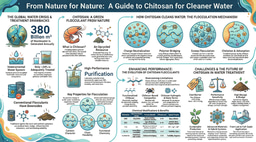Bridging Knowledge Systems to Enhance Understanding of the Gumegwsis
In the picturesque waters of inner Mawipoqtapei (Chaleur Bay, Eastern Canada), a collaborative research initiative is reshaping how we approach scientific inquiry and fisheries management. Led by the Gespe’gewa’gi Institute of Natural Understanding (GINU), this groundbreaking project centres on the threatened Gumegwsis (Cyclopterus lumpus, commonly known as the lumpfish). This initiative stands out by employing the Two-Eyed Seeing approach, an innovative framework that braids Indigenous, Local, and Western knowledge systems.
The project began in response to concerns from the Mi’gmaw community of Ugpi’ganjiq, who noticed changes in the Gumegwsis population. Historically, the Gumegwsis has not only been a crucial part of the local ecology but also holds significant cultural value for the community. Contrary to the Committee on the Status of Endangered Wildlife in Canada (COSEWIC) assessment, which previously noted no ceremonial uses of Lumpfish and a lack of Aboriginal Traditional Knowledge (ATK) information, our findings paint a different picture.
Through a series of semi-structured interviews with five esteemed Knowledge Holders from the community, complemented by extensive literature reviews, mapping exercises, and temperature monitoring, our team has gathered profound insights into the life history of Gumegwsis in Mawipoqtapei. We documented vital information about their spawning and nursery habitats, significant changes in their abundance over time, and identified threats to their survival.
These insights not only challenge existing assessments but also highlight the critical gaps in our understanding when traditional scientific approaches are employed in isolation. The Mi’gmaw framework, which underpins our methodology, has proven instrumental in bridging these gaps, offering a richer, more comprehensive understanding of Gumegwsis ecology.
The skepticism that often surrounds the integration of diverse knowledge systems in scientific research persists among some scientists and decision-makers. However, our project demonstrates the undeniable value of such braiding. By combining different ways of knowing, we not only enrich our understanding but also foster more inclusive, effective management and conservation strategies.
As we move forward, the importance of co-creating knowledge with Indigenous communities cannot be overstated. The success of the Gumegwsis project serves as a testament to the potential of collaborative research in addressing complex ecological issues. It presents a compelling case for the necessity of incorporating multiple knowledge systems in the co-creation of species recovery strategies and in broader fisheries research.
This initiative is a clarion call to researchers, policymakers, and stakeholders in fisheries management across Canada and beyond to embrace a more holistic approach in their practices. By doing so, we can ensure that the management and protection of fisheries are as comprehensive and effective as possible, honouring both the scientific and cultural dimensions of biodiversity.
Stay tuned for further updates as we continue to explore and advocate for the integration of Indigenous, Local, and Western knowledge in advancing the stewardship of coastal areas and fisheries. Join us in championing a more inclusive and effective approach to environmental research and management.




Please sign in or register for FREE
If you are a registered user on Research Communities by Springer Nature, please sign in